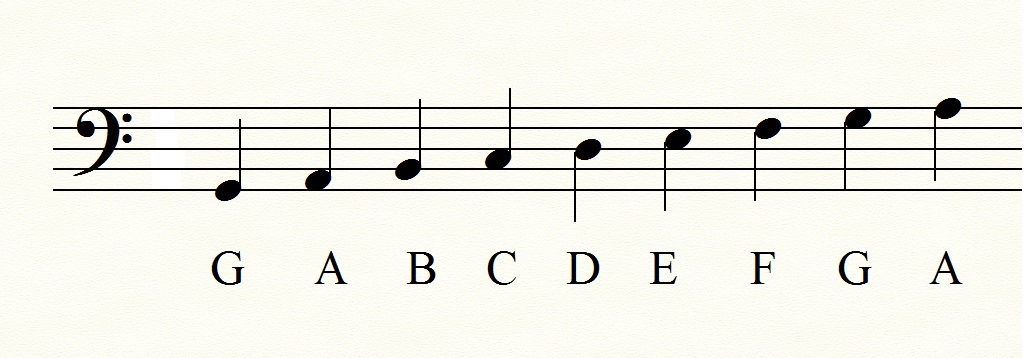If you’ve only read treble clef before, this is the page that will help you understand how to read music in bass clef. Learning to read music is like learning another language – but bass clef and treble clef are so related, I’m certain you’ll pick it up quickly. It’s like you already know how to speak Spanish, and now you’re learning Portugese!
Here’s the basics of bass clef:
- Each line and space has its own note name (a letter – just like treble clef)
- We’re still only using the seven letters in the musical alphabet (A, B, C, D, E, F, and G) and then you repeat them.
- When you move up the staff, you go forward in the musical alphabet (G, A, B, C, etc). When you go down the staff, you go backwards in the musical alphabet (C, B, A, G, etc).
- The names of the lines in Bass Clef are: G, B, D, F, and A
- The names of the spaces in Bass Clef are: A, C, E and G
You might have learned a mnemonic device to help you remember the lines and spaces in Treble Clef. The one I learned for Bass Clef Lines is:
- Good Boys Do Fine Always (or)
- Good Boys Deserve Fudge Always
The one I learned for the spaces is:
- All Cows Eat Grass (or)
- All Cars Eat Gas (except electric cars 🙂 )
The best mnemonic device for you may be the one you come up with yourself! One of my students came up with: Giant Bananas Do Fantastic Aerobatics. See if you can think of a sentence with the letters G, B, D, F, A or one that uses A, C, E and G.
Tuba Players Only:
You have a TON of notes you’ll play down below the staff in what we call “ledger lines.” You didn’t have very many of those when you played trumpet (low B under treble clef would’ve been one). All you have to do is pretend like it’s just another line on a staff. As you go down, go backwards in the musical alphabet and as you go up the ledger lines, go forward in the musical alphabet. This is a quick reference guide you can use as you’re reading your tuba music. My quick reference point is that “Low C” is two ledger lines under the staff. Good luck!


